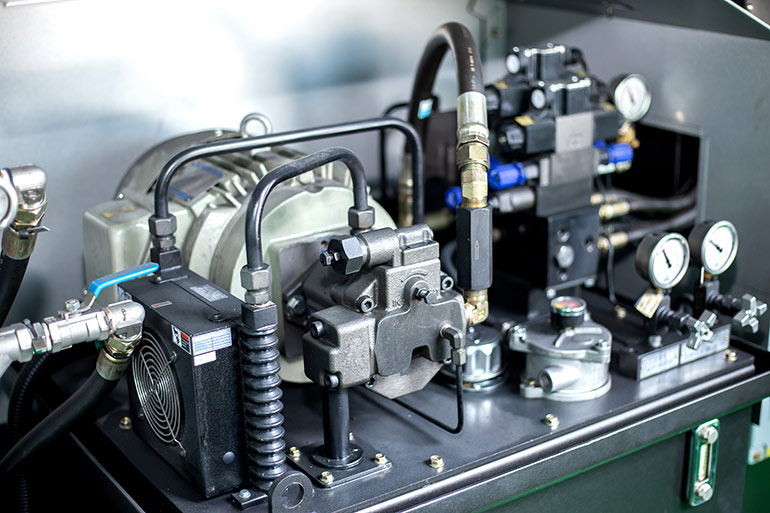By Josh Cosford, Contributing Editor
Most variable displacement hydraulic pumps create and use internal leakage. The leakage is a function of the pump, designed from the factory to lubricate wear components, provide hydrostatic bearing pressure and offer pilot energy to critical functions like pressure compensators. Without controlled leakage, a variable pump would stop working at best and grenade itself at worst.

The internal leakage designed within pumps comes with a caveat — that leakage must exit the pump and do so at low pressure. The case is the “reservoir” for variable displacement piston and vane pumps. Because pumps need oil for lubrication, the non-business end of the pump where swashplates pivot or cam rings slide must also contain oil. The continuous flow of leakage oil keeps the case full and components lubricated, but the pressure will build inside the case without somewhere to exit.
You can’t simply redirect case fluid back to the suction port because that suction effect would drain the case entirely. Besides, case drain oil is essentially pure heat because, as we already know, any hydraulic energy lost before doing useful work is wasted as pure heat. In fact, case drain flow is a reflection of the inefficiency of a pump, even if some of that inefficiency is intentional. For example, a 90% efficient 10 gpm pump on standby will emit nearly 1 gpm of case drain flow (give or take, depending on volumetric efficiency).
A common trick to cool hydraulic power units involves running the case drain directly through an efficient oil-to-air cooler. By efficient, I mean not only thermally efficient but also flow efficiently. The hydraulic cooler must offer little to no backpressure to prevent excessive backpressure. Although case drains flow relatively little compared to pump flow, 10% of a 100 gpm pump is still 10 gpm, and plenty of small coolers cannot flow at that rate without significant back pressure.
You won’t expect manufacturers to list any more than 7-10 psi case drain pressure above inlet pressure. Should case pressure become excessive with too much drain backpressure or a clogged line, your best case scenario is a loss of power. The worst-case scenario is a reduction in the vital leakage flow required for lubricating all the pump’s critical components. Without that lubrication, a pump may last seconds before total failure. Just as bad with high case pressure is the lack of pressure compensator function — case pressure is additive to compensator spring pressure, and the pump will not come off stroke, causing internal damage.
Although the case drain tube or hose is typically the smallest pump line, it must never restrict case flow. Although coolers in the drain line are okay, you should avoid using filters, which may become clogged and create excessive back pressure. Although rare, occasionally, a drain line may become clogged with sludge. If you experience sludge or varnish elsewhere in your system, inspecting that case drain hose is a good idea.
Finally, be careful with case drain flow meters. Although properly sized units shouldn’t hurt, most flow meters use a spring-activated flow indicator that uses backpressure to identify flow rate. Should your pump start to ail, the added case flow may increase backpressure, thereby accelerating pump damage.
Filed Under: Components Oil Coolers, Engineering Basics, Pumps & Motors